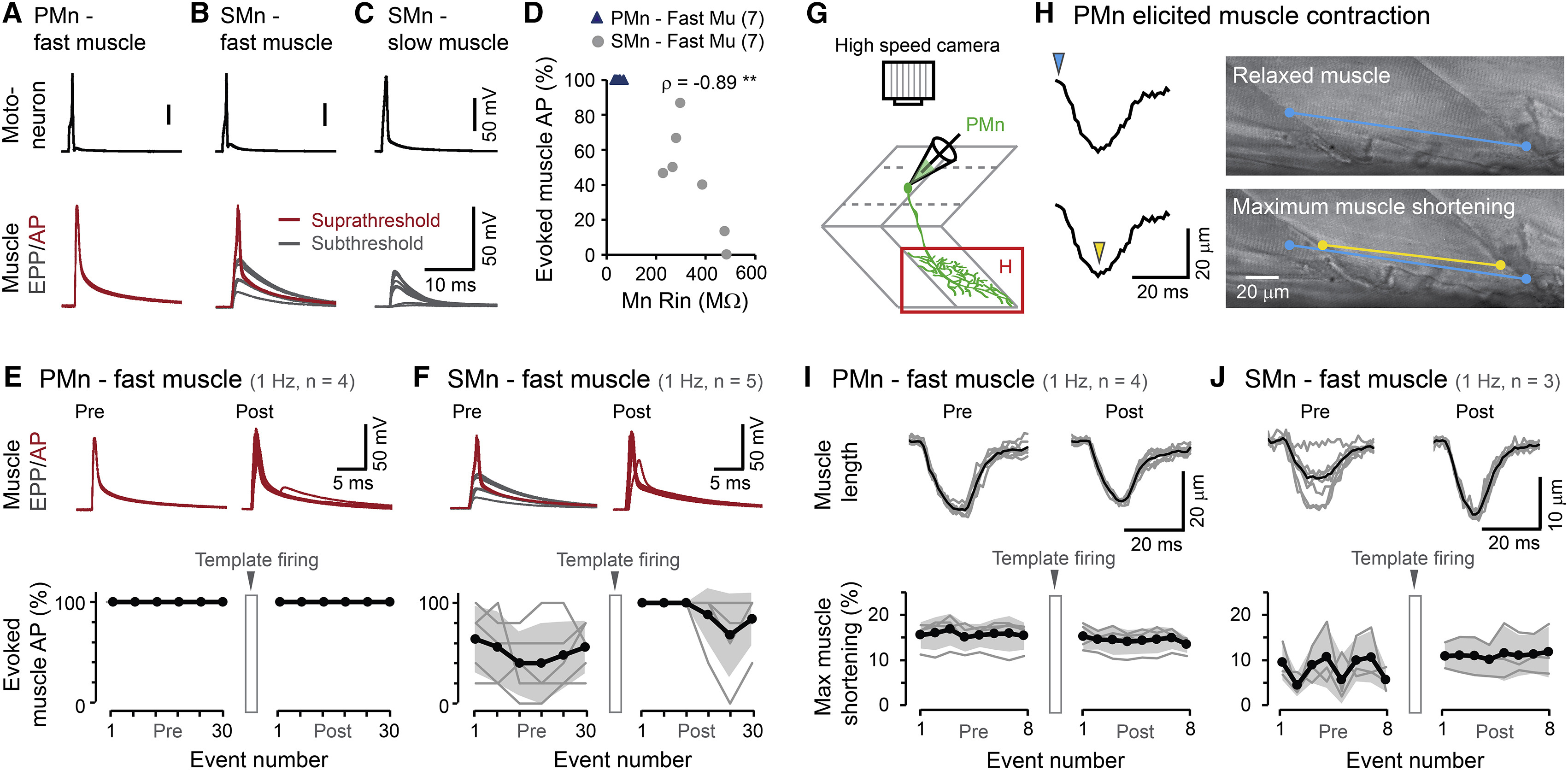Fig. 4
Secondary Motoneurons More Reliably Elicit Fast Muscle Action Potentials and Muscle Contractions after Repeated Motoneuron Firing with the Template Pattern
(A?C) Example traces of paired current-clamp recordings of a motoneuron and a muscle cell (A, PMn-fast muscle; B, SMn-fast muscle; C, SMn-slow muscle). Top: averaged waveform of motoneuron action potentials (n = 10). Bottom: voltage responses of muscle cells, temporally aligned to the peak of motoneuron action potentials (n = 10). Subthreshold endplate potentials (EPPs) are shown in gray; muscle action potentials are in red. Muscle voltage changes in (A)?(C) share the same scale.
(D) The reliability of motoneuron firing eliciting muscle action potentials versus motoneuron input resistance (Rin). ??p < 0.01 following Spearman?s rank test (? is shown).
(E and F) Muscle voltage change in response to 1 Hz, 30 s motoneuron firing before (Pre) and after (Post) repeated template firing. Templates 1 and 2 were used for PMn-fast muscle (E) and SMn-fast muscle (F) paired recordings, respectively. Top: example traces of the first ten muscle voltage responses temporally aligned to the peak of motoneuron action potentials. Bottom: group data for the ratio of motoneuron action potentials able to elicit muscle action potentials (5 s/five event bin; 1, suprathreshold; 0, subthreshold; gray lines, individual recordings; thicker black line with shading, mean ± SD).
(G) Experimental preparation for simultaneous patch recording of a motoneuron and video recording of elicited muscle contractions. The red rectangle marks the region for muscle length measurements in (H).
(H) Right: the blue and yellow dots mark the two ends of a fast muscle cell at its relaxed and maximally contracted state, respectively, during a PMn-elicited contraction. Left: the time course of muscle length change during the contraction with blue and yellow arrowheads indicating the relaxed state and maximum contraction, respectively.
(I and J) The amount of muscle shortening in response to 1 Hz, 8 s motoneuron firing (I, PMn; J, SMn) before (Pre) and after (Post) repeated template firing. Top: example traces of the muscle length time course (n = 8; gray lines) aligned temporally with their averaged waveform (black line). Bottom: group data showing the maximum muscle shortening, normalized to the original muscle length, in response to each motoneuron action potential (gray lines, individual recordings; thicker black line with shading, mean ± SD).
See also Figure S4 and Movies S1 and S2.

